Three Wise NASes
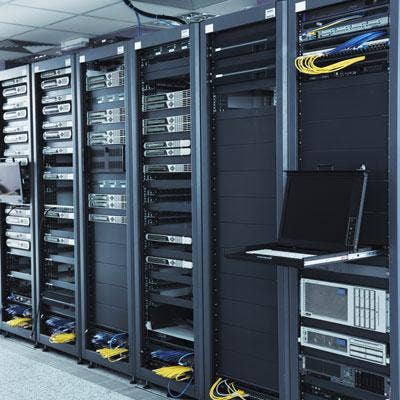
Focusing On NAS
Welcome to Storage Week. This slideshow is the first brick in the CRN Test Center's wall-to-wall coverage of the latest information about storage drives, devices, and apps for the enterprise and consumer markets. Storage Week will include five days of slideshows and videos designed to bring you solid intel from the storage world. Today's slideshow presents three new NAS devices for small companies and workgroups.
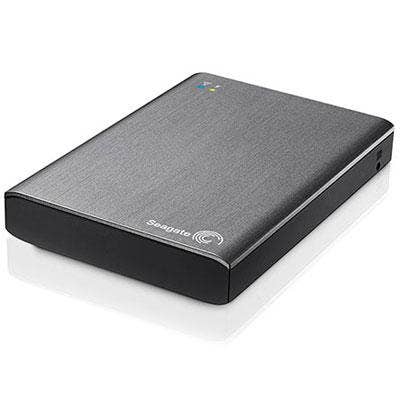
Seagate Wireless Plus
When the storage on your tablet is tapped out, a PC often becomes the repository, tethering the device forever to its master. No more, thanks to Seagate Wireless Plus, a battery-powered external hard drive released in February that connects wirelessly to Android and iOs smartphones and tablets, and adds a terabyte of storage with no cables for data or power.
These capabilities alone might be enough to justify its $199 retail price tag. But Wireless Plus also can act as a storage and media streaming server as well as an Internet access point for mobile devices within a 150-foot radius. The drive broadcasts its own Wi-Fi network, and once connected to an existing access point, bridges its connection to up to eight clients without special software. For accessing the drive for storage or streaming, the Seagate Media app for Android and iOS is simple to use.
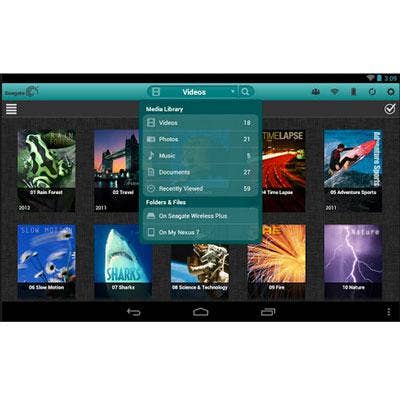
Wireless Plus Setup
After downloading software to our Android test device, it took just a few minutes to complete the setup. Step one connects to its Wi-Fi SSID, giving us access to the wireless drive's files but temporarily disconnecting the phone from its Internet-connected access point. This was quickly remedied by using the client software to connect the Wireless Plus to that same AP. Wireless Plus was then ready to provide an Internet connection and file services to as many as eight smartphones or tablets. The client software's file-search function separates local files from those on the server, and can filter by photo, video and other media types, with thumbnails.
This tiny (about 3.5 inches x 5 inches) device gets its power from any USB 2.0 or 3.0 port or from the included adapter, and is rated to run for up to 10 hours between charges. The kit also includes a SATA-to-USB 3.0 adapter and cable, which serves to move files to and from the Wireless Plus drive at about 5 GB/s. The adapter (which is backward-compatible with USB 2.0) works with any SATA drive to find utility anywhere files that need to be moved quickly.
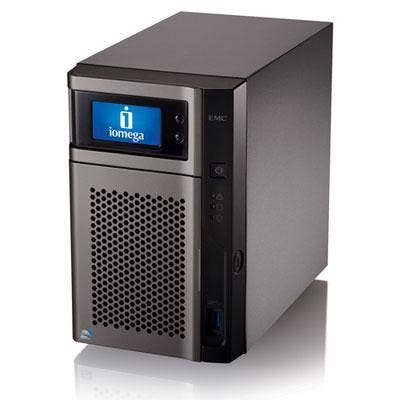
Iomega StorCenter
Few products are easier to set up and manage than Iomega's StorCenter high-end px series and ix series network-attached storage devices, which got a refresh in October. For the small business or department, NAS is often the most cost-effective method of providing shared storage to workgroups using off-the-shelf 3.5-inch or 2.5-inch spinning or solid-state drives. Iomega's solutions can be set up in minutes and administered by office staff or a service-provider reseller with a super-easy, two-paned browser interface.
When the px series was introduced in 2011, the Test Center performed a review of the px6-300d, and found a great-looking NAS with six hot-swap drives and lots of high-end features injected by parent company EMC. In the two years since, the company has been busy bestowing its offspring with yet more enterprise wisdom to help improve versatility and uptime. These versatile devices support basic RAID, all major sharing protocols, including Apple Time Machine, and virtualization environments from Citrix, Microsoft and VMware. Both run EMC's Linux-based LifeLine OS.
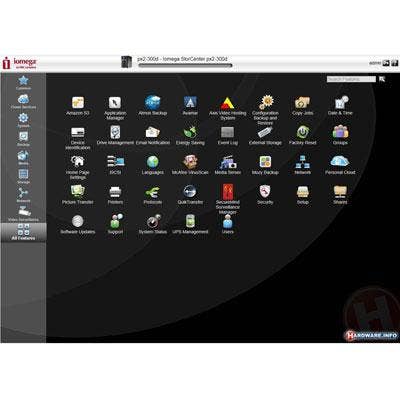
StorCenter Extras
Built around a dual-core Intel Atom CPU, Iomega's px2-300d adds hot-swap drive capability and can be configured with RAID 0 or RAID 1, as a block-level iSCSI SAN, a file-level NAS device, or both at once. Dual-Gbit Ethernet ports can be aggregated or redundant. Pricing ranges from $499 unpopulated to $1,199 with 6 TB (2 x 3 TB drives). The ix2 starts at $199 unpopulated, and houses a Marvell processor. The unit's two drive bays are not hot-swappable, and it contains just a single Gbit Ethernet port.
Both units are running LifeLine 3.4 and employ Iomega's excellent Personal Cloud software, which eliminates the complexities of web-enabling the device for sharing and data replication. EMC says the latest version of its Linux-based operating system contains the "more efficient" EXT4 file system, works better with Active Directory, supports MySQL Server and can handle video surveillance. The px NAS can handle as many as 16 cameras, and the ix can control up to eight. The px also works with EMC's Avamar data-deduplication and backup software.
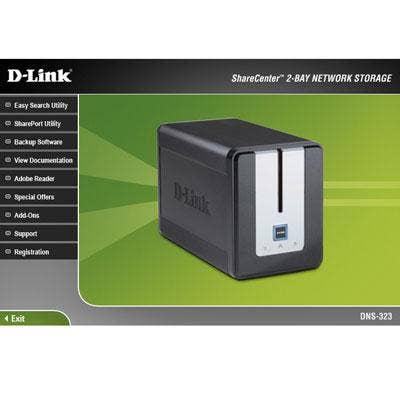
D-Link ShareCenter DNS-325
No longer just that "inexpensive router company," D-Link has made a name for itself in video surveillance and network-attached storage for homes and small businesses. Among its latest entries is the ShareCenter DNS-325, a two-drive NAS device that's deceptively powerful for a box that's about the size of a loaf of bread. Among its major benefits, this and other D-Link NAS devices accept a variety of 3.5-inch drives straight away; there's no caddy to mess with and no tools are required.
As with other D-Link systems we've tested, the DNS-325 comes with a simple and familiar Windows setup utility, which scans the local network for compatible devices. Once the device is selected, the tool switches to the PC's default browser to perform the remaining configuration steps, which include selecting the file system (EXT2 or EXT3), RAID level (0 or 1), JBOD (two drives as one volume) or separate drives, and formatting the drives. Within a few minutes of plugging in its Gbit Ethernet port, the D-Link NAS was serving protocols for Linux, Mac OS and Windows clients, plus NFS, FTP and iTunes.
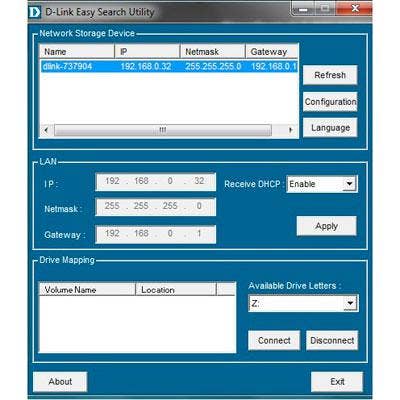
ShareCenter Features
For nontechnical customers or resellers, the D-Link DNS-325 offers a cost-effective solution for getting small companies or workgroups up and running with shared storage and/or backup quickly. The ShareCenter's USB port can provide printer sharing for an entire network. Support for RAID 1 protects data by automatically mirroring one drive to the other.
The D-Link solution includes DriveClone Pro from FarStone, an image-cloning and file-level backup utility for Windows with automatic scheduling, incremental backup capability and support for hidden recovery partitions. Also on the installation disc is D-Link's SharePort utility for wireless streaming to the company's SharePort Go rechargeable wireless router. This $60 device adds many of the same capabilities as Seagate's Wireless Plus to the D-Link ShareCenter or other USB-equipped storage device.
Storage Week continues all week as the CRN Test Center presents storage apps, solid-state drives and other surprises for the enterprise and consumer.